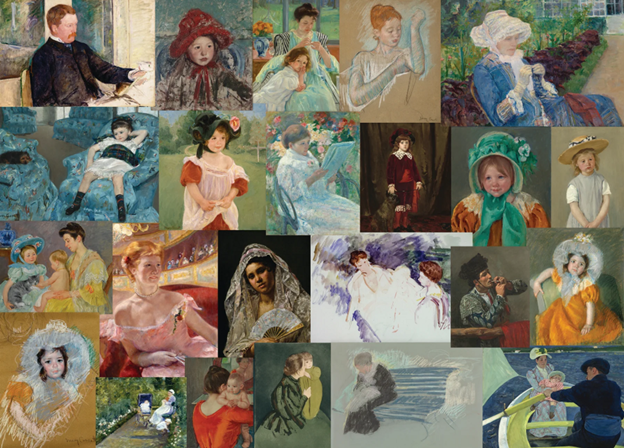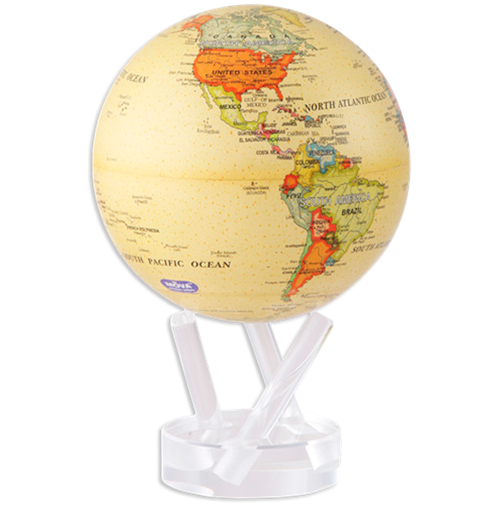Creating an Interactive Classroom This Fall: Must-Have Items for Teachers
Aug 13th 2025
As the school year begins, teachers across the country are looking for fresh ways to inspire creativity, spark curiosity, and make learning an interactive experience for their students. A fun, engaging classroom environment can foster collaboration, improve focus, and help students develop critical thinking skills.
This fall, consider adding interactive tools and visually stimulating items—like art puzzles, Mova Globes, brainteasers, and art supplies—to create a classroom atmosphere that encourages exploration and hands-on learning.
Art Puzzles: A Blend of Creativity and Problem-Solving
Art puzzles are more than just a pastime; they can become a collaborative classroom activity that encourages teamwork, patience, and attention to detail. Whether it’s a puzzle featuring a famous painting or a vibrant, abstract design, these puzzles can spark conversations about color, composition, and artistic style. They also teach problem-solving skills in a low-pressure, enjoyable way.

Set up a puzzle station where students can work on a piece during free time or as a group project throughout the semester. Art puzzles also create a natural opportunity to discuss the history and significance of the artwork featured in the puzzle. Teachers can connect these discussions to lessons in art history, cultural studies, or even geometry, as students explore shapes and spatial relationships. They also are great at simply introducing young minds to famous artists and their works.
Here at the Museum of Fine Arts, Boston, we have a variety of artistic-themed puzzles that are perfect for sparking imagination and encouraging academic conversation. If you’re on the lookout for ways to make your classroom more interactive and fun this year, these are a must!
MOVA Globes: Inspiring Curiosity About the World
Mova Globes are mesmerizing, self-rotating globes that move silently without batteries or cords. Powered by ambient light and the Earth’s magnetic field, these globes serve as both a functional educational tool and a captivating piece of décor.
For geography lessons, a Mova Globe can act as a visual centerpiece, helping students develop a deeper understanding of continents, oceans, and global landmarks. Beyond geography, they can also be used to inspire discussions about astronomy, physics, and the technology that allows these globes to rotate so seamlessly. Their slow, graceful movement can capture students’ attention and encourage them to ask big questions about how the world works.
Brainteasers: Strengthening Critical Thinking Skills
Educational brainteasers, whether they’re wooden puzzles, metal disentanglement games, or classic riddles, are a fantastic way to challenge students’ logic and reasoning abilities. By incorporating brainteasers into your classroom, you create opportunities for students to work individually or collaboratively on solving complex problems.
A “brainteaser corner” in your classroom can be a go-to station during downtime, allowing students to reset their minds while still engaging in productive, skill-building activities. These puzzles encourage creative problem-solving, persistence, and outside-the-box thinking—qualities that are essential for success both inside and outside the classroom. Teachers can even tie brainteasers into their lesson plans, using them as warm-ups before a math class or as quick mental breaks to re-energize students between lessons.
Art Supplies: Fueling Imagination and Hands-On Learning
No interactive classroom is complete without a well-stocked supply of art materials. Art supplies—such as colored pencils, watercolor sets, markers, sketchpads, and clay—allow students to express their creativity while deepening their understanding of class topics.
Teachers can integrate art into various subjects, from illustrating scenes from a novel to creating diagrams in science. Encouraging students to use visual learning techniques can help them process information in new ways and retain what they’ve learned. A dedicated art station in the classroom can serve as a creative outlet during free periods, and art projects can be adapted for all grade levels, fostering a sense of accomplishment and self-expression.
The Importance of Introducing the Arts and Interactivity to Young Minds
Children are constantly bombarded with digital stimuli, but not always the kind that nurtures their imagination or fosters deep cognitive growth. Introducing the arts in a classroom setting helps to give students the tools to process their emotions, explore abstract thinking, and connect to the world in a more personal and meaningful way.

Exposure to the arts at an early age has been shown to improve everything from emotional intelligence to academic performance. When students engage in creative tasks, whether it’s coloring, composing a short story, or assembling a puzzle, they're activating different areas of the brain that are tied to memory, problem-solving, and spatial reasoning.
These are critical functions that support growth across all subjects, not just the humanities. Incorporating art projects into lessons helps students make deeper connections with the material, encouraging them to interpret, question, and explore, rather than simply memorize.
Interactive elements like puzzles, brainteasers, and hands-on art supplies go even further by making learning a full-body experience. When children manipulate objects with their hands, they strengthen fine motor skills and engage kinesthetic learning pathways, which is especially important for students who may struggle with traditional lecture-based methods. Interactivity fosters curiosity, independence, and resilience, as students experiment, fail, and try again in a supportive environment.
By embracing interactivity and the arts in the classroom, teachers are doing more than decorating their space, they're cultivating future thinkers, problem-solvers, and creators. These experiences shape how children view the world and themselves, planting seeds of confidence and innovation that will carry them far beyond the classroom walls.
Bringing It All Together
By combining the aesthetic appeal of Earth MOVA globes, the collaborative nature of art puzzles, the mental challenges of brainteasers, and the hands-on freedom of art supplies, teachers can create a classroom environment that goes beyond traditional learning. These items encourage students to engage with the world around them, think critically, and express themselves creatively.
This fall, consider curating a small section of your classroom dedicated to exploration and creativity. With these interactive tools, students will feel inspired to collaborate, experiment, and enjoy the learning process, transforming your classroom into a vibrant hub of discovery.

